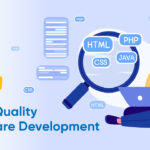The Importance of Documentation in Software Development: Best Practices
In the dynamic world of software development, documentation often takes a backseat to coding and feature development. However, its importance cannot be overstated. Well-crafted documentation serves as a cornerstone for effective collaboration, knowledge transfer, and project maintenance. This article explores the critical role of documentation in software development and outlines best practices for creating and maintaining it.
Why Documentation Matters
1. Facilitates Communication
Effective communication is essential in software development, especially within teams that may include developers, designers, testers, and stakeholders. Documentation provides a shared understanding of the project, its goals, and its implementation details. This is particularly vital in larger teams or organizations where multiple people contribute to a project. Clear documentation minimizes misunderstandings and ensures everyone is on the same page.
2. Enhances Onboarding
For new team members, documentation acts as a roadmap to understanding the codebase, workflows, and development processes. A well-documented project allows newcomers to become productive more quickly by reducing the time spent seeking answers to basic questions. Comprehensive onboarding materials can significantly shorten the learning curve, helping new hires integrate seamlessly into the team.
3. Supports Maintenance and Updates
Software is never truly “finished”; it requires ongoing maintenance, updates, and bug fixes. Documentation plays a crucial role in this lifecycle. When developers understand the design decisions, architecture, and functionality of a system, they can make informed changes without inadvertently introducing new issues. Furthermore, good documentation helps preserve knowledge within the team, reducing reliance on specific individuals and minimizing the impact of employee turnover.
4. Facilitates Testing and Quality Assurance
Testing is an integral part of the software development process. Documentation detailing the intended behavior of features and systems allows testers to understand the expected outcomes and design effective test cases. This clarity improves the quality of testing and ensures that all aspects of the software are verified against the requirements.
Best Practices for Effective Documentation
1. Use Clear and Concise Language
Effective documentation should be easy to read and understand. Avoid jargon and overly technical language unless necessary. Aim for clarity and brevity, ensuring that even non-technical stakeholders can grasp the key points.
2. Keep Documentation Up to Date
Documentation is only valuable if it reflects the current state of the project. Regularly review and update documentation to ensure it remains accurate. Establish a process for maintaining documentation as part of the development workflow, perhaps using version control to track changes.
3. Adopt a Standardized Format
Consistency is key to effective documentation. Adopting a standardized format for all documentation (such as README files, API documentation, and design documents) enhances readability and makes it easier for team members to locate information. Consider using templates that include sections like purpose, usage, examples, and troubleshooting.
4. Incorporate Visual Aids
Visual aids like diagrams, flowcharts, and screenshots can significantly enhance understanding. Complex processes or architectures can often be explained more clearly through visuals than through text alone. Use tools that allow you to create and integrate these aids seamlessly into your documentation.
5. Encourage Team Collaboration
Documentation should not be the responsibility of a single individual. Encourage team members to contribute to documentation efforts, especially those who work directly on features or components. Collaborative documentation fosters a shared sense of ownership and ensures diverse perspectives are captured.
6. Utilize Documentation Tools
There are numerous tools available that facilitate effective documentation. From wikis and Markdown editors to specialized documentation generators for APIs, selecting the right tools can streamline the documentation process and improve accessibility.
Conclusion
Documentation is a vital component of successful software development, offering numerous benefits that extend beyond mere record-keeping. By fostering communication, supporting onboarding, aiding maintenance, and enhancing testing, effective documentation contributes to the overall quality and sustainability of software projects. By implementing best practices for documentation, development teams can create valuable resources that not only enhance their current projects but also pave the way for future success. In an industry where change is constant, investing in documentation is an investment in the long-term health of any software endeavor.


